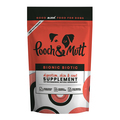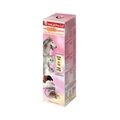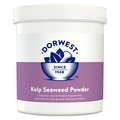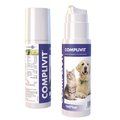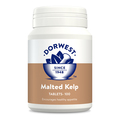The best way to tell that your pet is the correct weight is by working out their Body Condition Score (BCS). Every animal will have a slightly different body build, even compared to those of the same breed. The ideal weight will therefore vary and so breed averages are not good guides to follow when trying to calculate this. Fortunately Body Condition Scoring is relatively easy to do. In this guide we will explain how you can do this yourself, all you need is your pet, a pair of eyes and your hands!
What do I do to BCS my pet?
There are three key areas on your pet’s body you need to focus on; the ribs/spine, the waist and the abdomen (belly):
-
Ribs/spine
-
Observe these areas from a distance.
-
Feel over the ribs and along the spine using your hands with light pressure.
-
The ribs and bumps of the spine should not be visible but should be easily felt.
-
-
Waist
-
Observe from a distance and from above.
-
The waist should be clearly defined from above but not excessively narrow/bony.
-
-
Abdomen (belly)
-
Observe from a distance.
-
Feel the belly with light pressure.
-
There should be a clear ‘abdominal tuck’ when viewed from the side. This is where the abdomen tucks in a bit as you follow it from the chest area. A small amount of fat can be present but should not be excessive.
-
How do I score my pet?
Once you have done the above then you can compare what you are feeling/seeing to a Body Condition Score chart. In doing so you can work out how your pet scores. There are many different versions available and scoring systems either work on a scale of 1 to 5 or 1 to 9. A score of 1/5 or 1/9 being severely underweight, 3/5 or 5/9 being an ideal weight and 5/5 or 9/9 being severely overweight. Please refer to the relevant chart below depending on the species of your pet:
Dog

Cat

What do I do with this score?
It is advised to weigh your pet after taking this score. This will help you know what your pet’s weight is when scoring the way they have. This is especially useful if you are looking to keep them at an ideal weight or working to increase/decrease the weight. The ideal weight your dog needs to be will be very specific to them, having an estimate of how much they should weigh when at their ideal weight is very helpful for monitoring weight loss or gain.
If the score is too low or high then in most cases you will want to work towards the ideal score of 5/9. It is best to seek nutritional advice from a professional on how to do this. This should be your vet if significant weight loss has occurred or you are concerned about underlying health issues. If your pet is perfectly healthy but not the ideal weight then you can reach out to us for nutritional advice, we would be more than happy to provide this.
If you have any questions regarding the above or need any support then please get in touch with our team at [email protected].
References:
-
World Small Animal Veterinary Association BCS resources (https://wsava.org/)
Written by: Dr. Nick Garside BVetMed MRCVS

